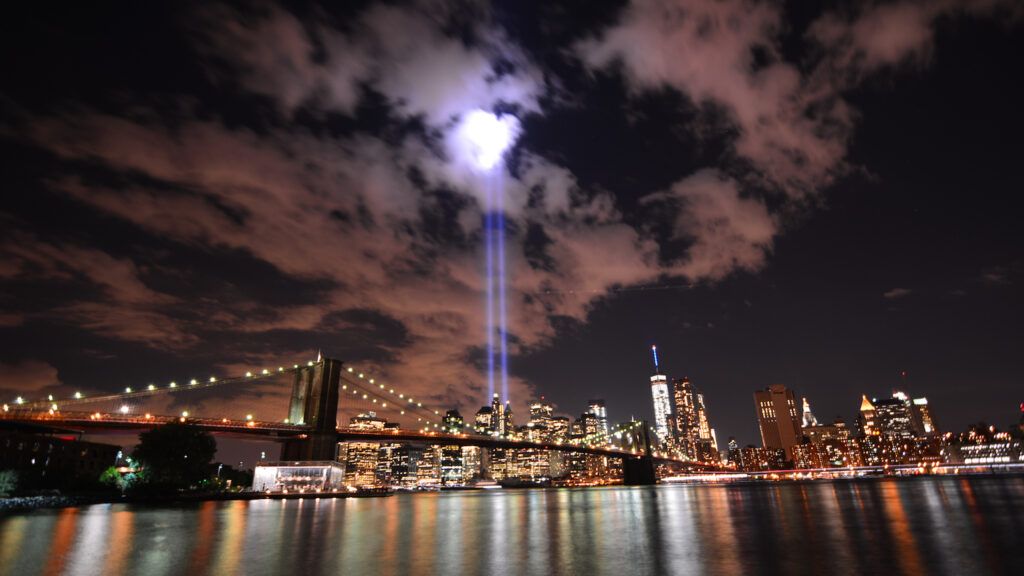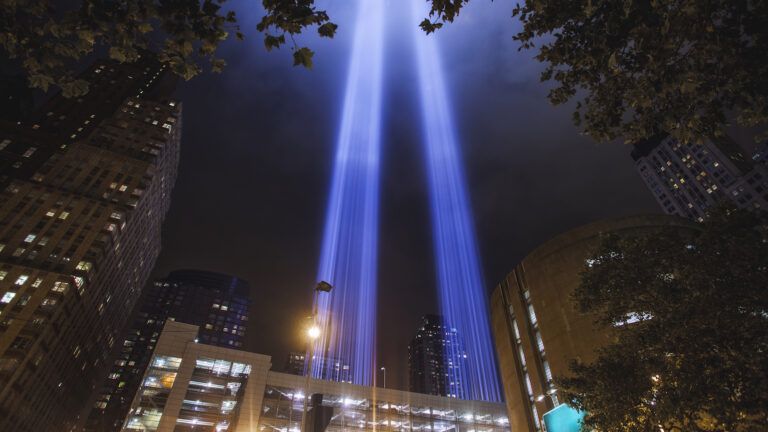“The moon is dark tonight, a new
moon for a new year. It is
hollow and hungers to be full.
It is the black zero of beginning.”
These words are the opening of the poem “The Head of the Year” by Marge Piercy. The poem explores themes of Rosh Hashanah, the Jewish New Year that began earlier this week, as is the tradition during a new moon.
I encountered the poem in preparation for the holiday. But I’m finding it also holds special resonance for me in light of the 20th anniversary of the attacks of September 11, 2001.
Piercy’s opening lines remind me that grief is an emotional experience that evolves over time. Just like the moon, grief never disappears, never ceases to exist. But also like the moon, grief moves in cycles, sometimes illuminating a star-speckled sky, and sometimes retreating into quiet, dark solemnity—or as Piercy puts it, “the black zero of beginning.”
Every anniversary of a loss—whether personal and intimate or global like the trauma of 9/11—is a return to a vortex of memory, a longing for the fullness of the “before” time.
It’s particularly notable to me that the 20th anniversary of 9/11 falls between Rosh Hashanah and the Day of Atonement (Yom Kippur), days that are referred to as the “Days of Awe.”
Awe is a fitting word for the holiness of both the Jewish holidays and the reflective moment we are walking through in remembrance of September 11, 2001. The twin pillars of light that shine in New York City in memorial to the towers pierce the black sky in a way that asks us to name both what we lost and what we yearn to see. Peace, wholeness, repair. To bring these aspirations to fruition is the work of a lifetime.
Which is exactly what we are asked to contemplate in the hungry hollowness of the new moon, at the new year, at the start of the third decade since that terrible September morning: What is the work of our lives?
What, in other words, do we yearn to fill our skies with?





